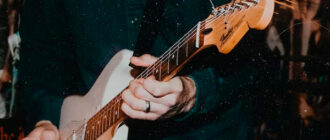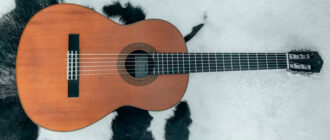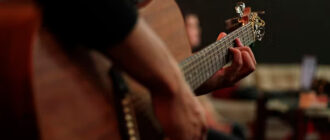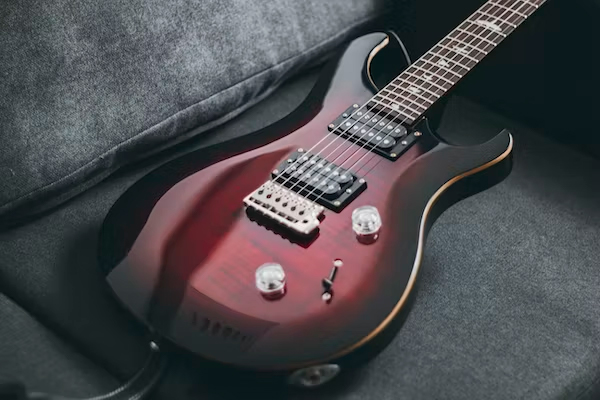
How to Fix a Warped Guitar Neck: Playing the guitar is a passion, but a warped neck can disrupt the joy. If your guitar feels off, it may be warped. Learn how to fix this issue that frustrates many guitarists. Explore effective solutions for a smoother playing experience.
In this comprehensive guide, we’ll walk you through the process of fixing a warped guitar neck, ensuring that you can get back to playing your favorite tunes in no time.
Table of Contents
What Is a Warped Guitar Neck? How to Tell If A Neck is Warped
Before we dive into the fixing process, let’s understand what a warped guitar neck means. A warped guitar neck refers to the condition where the neck is twisted or bent due to various factors, causing the strings to be unevenly spaced from the fretboard, and the neck of the guitar is not straight, affecting the overall playability and performance. A warped guitar neck refers to when the neck of your instrument is no longer straight. A guitar with a warped neck may be playable depending on the level of the problem. This can lead to buzzing, intonation problems, and overall discomfort while playing.
A bowed guitar neck curves outward in the middle, while a twisted neck rotates around its central axis. On the other hand, a humped neck creates a raised area in the middle. Each type of warping can affect your playing experience and the guitar’s overall sound.
When a guitar neck is warped, it can cause problems with string action, intonation, and overall playability. When the neck shape is compromised, it can affect the intonation, action, and overall playability of the guitar.
Can a Bowed Guitar Neck be Fixed?
Yes, a bowed guitar neck can indeed be fixed. With the right tools and techniques, you can restore your guitar neck to its proper shape, eliminating any discomfort that a warped neck may cause.
The most common method to fix a bowed neck is through a truss rod adjustment. The truss rod is a metal rod that runs through the length of the neck and is designed to counteract the tension of the strings. By adjusting the truss rod, you can straighten the neck and eliminate the bow. However, it’s important to note that extreme bowing guitar may require professional repair or even a new neck.
By following the methods outlined in this guide, you can restore your guitar’s fretboard to its optimal shape and functionality.
Is There a Way to Fix a Twisted Guitar Neck?
A twisted guitar neck as well can also be fixed through a series of steps. You’ll be able to straighten out the neck and get your guitar playing like new again.
Twisting refers to when the neck rotates on its axis, causing the strings to be misaligned. While fixing a twisted neck may be more challenging, it is still possible with the right techniques. Twisting occurs when one side of the neck is higher than the other, causing uneven string action and intonation problems.
Fixing a twisted guitar neck is a more complex process compared to fixing a bow. Occasionally, it is best to consult a professional guitar technician or luthier to address a twisted neck. They have the expertise and tools to evaluate the severity of the twist and determine the best course of action. In some instances, a twisted neck may require a new neck installation to completely resolve the issue.
Step-by-Step Guide: How to Fix a Warped Guitar Neck
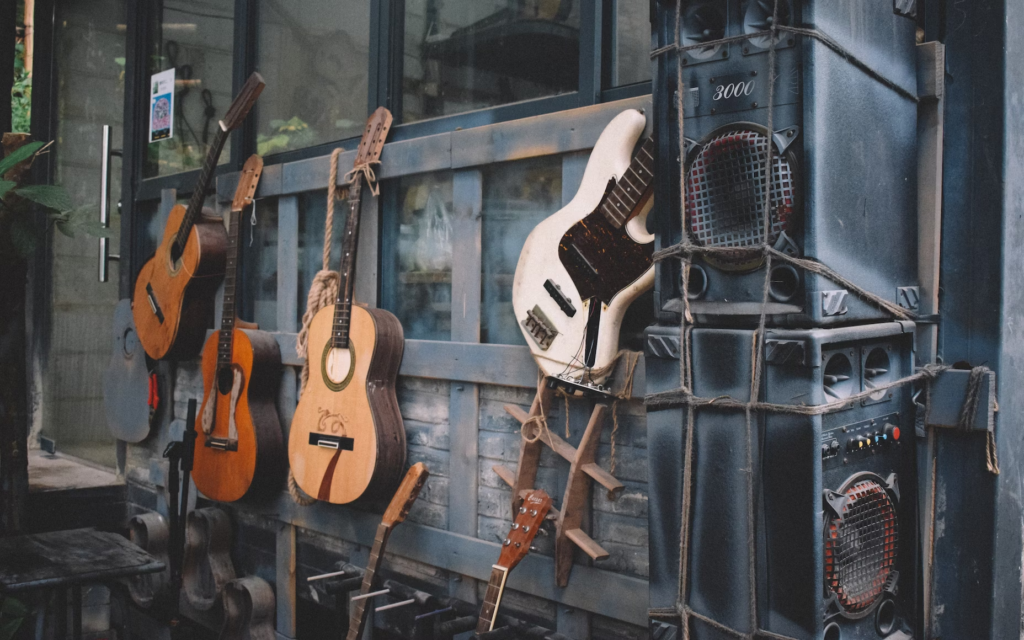
Image by NII from Unplash
Checking the Straightness of the Guitar Neck
Ensure that the neck is straight and not exhibiting any visible deviations. Place the guitar on a flat surface and look down the neck from the headstock to the body. Next, hold your guitar in the playing position look down the side of the neck hold the neck against eye level, and look down the neck from the headstock to the body of your guitar. Lay the guitar on a flat surface and observe if the neck bows due to string tension. If you notice any irregularities, such as a concave or convex shape, your neck is likely warped.
Place it along the neck to see if there are any visible gaps or inconsistencies. This will help you identify which areas need more attention during the repair process.
- Place your guitar on a level surface and observe the neck from the side.
- Look for any visible signs of warping, such as a hump or bow in the neck.
- Set the guitar neck’s straightness by eye, or use a straightedge or ruler to assess if your guitar’s neck is warped.
- Hold the guitar in place and observe the neck from various angles.
Removing the Frets from the Neck
If your neck requires extensive repair, it may be necessary to remove the frets. Before you can proceed with the actual repair, you must remove the neck from the guitar body. This step is necessary to ensure that you have unobstructed access to the neck for the repair You can use a fret removal tool or take your guitar to a professional for this task.
Exercise caution guitar during this process to avoid damaging the fretboard and neck.
- To repair the warping effectively, you’ll need to remove the frets from the neck.
- Use a free removal tool or a small hammer and a piece of wood to gently pry the frets out.
Repairing a Warp in the Neck
Now comes the crucial step of actually fixing the warp in your guitar neck. Depending on the type and severity of the warp, there are different methods you can employ. For a bowing neck, adjusting the truss rod may be sufficient. Twisted or humped necks may require more extensive repairs, such as heating and bending the neck back into shape.
- Before making any adjustments, it’s important to relieve tension in the neck.
- Adjust the truss rod to straighten the neck gradually, making small adjustments at a time.
- Be patient and make sure to monitor the progress as you go along.
- Identify the specific area of the neck that is warped.
- Apply appropriate techniques such as heat or humidity to correct the warp.
- Utilize the truss rod adjustment system to fine-tune the neck’s straightness.
- Take your time and make gradual adjustments to prevent further damage.
- Identify whether the neck is twisted or bowed for appropriate repair methods.
- For a bowed neck, adjust the truss rod to counteract the bowing.
- For a twisted neck, apply pressure to gradually straighten the neck back to its proper alignment.
- If the warp is minor, a truss rod adjustment may be sufficient. Consult your guitar’s manufacturer’s guidelines for adjusting the truss rod properly.
- For more severe warps, additional steps may be required, such as using heat and pressure to reshape the neck or employing a standard neck reinforcement technique.
How Do You Fix a Hump in a Guitar Neck?
If your guitar neck has a hump, which is a raised section in the middle of the neck, you’ll need to address it separately.
- A hump in the guitar neck can be caused by a variety of factors, including changes in humidity.
- If you notice a hump, you may need to adjust the truss rod differently to correct it.
- Seek professional assistance if you’re unsure about handling this step on your own. Discuss the potential for leveling out the twist with your repairer and make a call that’s right for you and for the instrument. Don’t forget the new neck option where appropriate for bolt-on instruments.
The Cost of Repair a Warped Neck
The cost of repairing a warped guitar neck can vary depending on the extent of the damage and the expertise required for the repair. If you’re comfortable with DIY repairs, you can save some money by fixing it yourself. However, for more complex issues, it’s advisable to consult a professional guitar technician. Simple truss rod adjustments or basic repairs may be relatively inexpensive, while more complex repairs or new neck installations can be more costly.
Why Do Guitar Necks Warp?
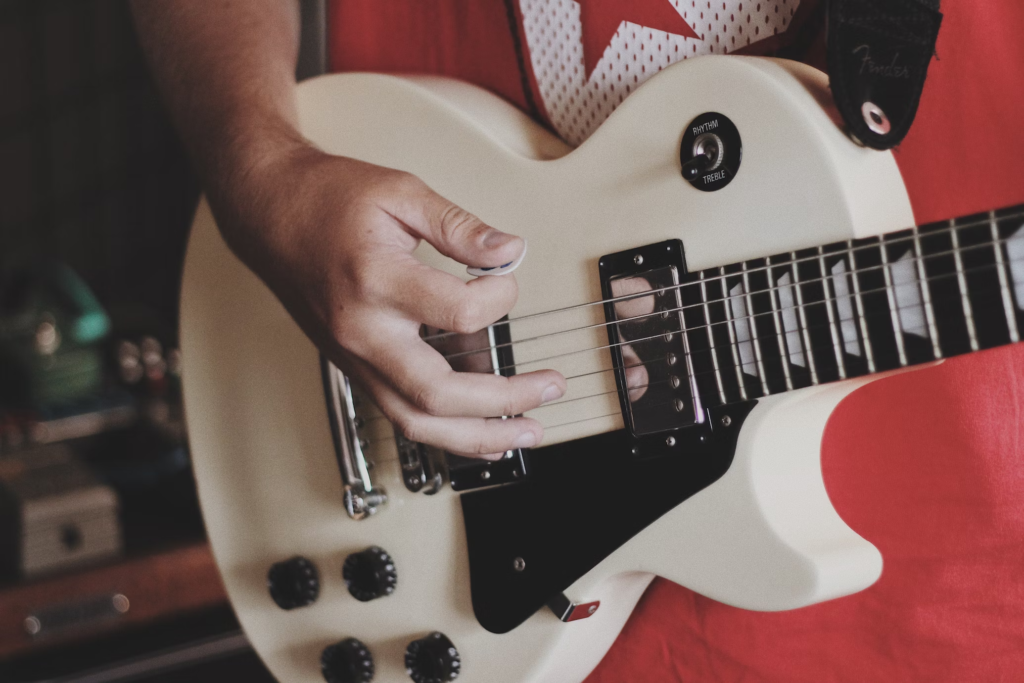
Image by Oleg Ivanov from Unplash
Guitar necks can warp due to several reasons, including changes in humidity and temperature, improper storage, or excessive tension on the neck. Understanding these causes can help you prevent future issues with your guitar neck.
- When the tension of the strings is unbalanced or consistently high, it can cause the neck to bend or twist over time.
- Additionally, excessive tension on the strings, improper storage, or exposure to extreme conditions can also contribute to neck warp.
- Common factors contributing to warped neck issues include changes in humidity and temperature, improper storage, excessive string tension, or poor craftsmanship.
How to Prevent Your Guitar Neck from Warping?
Prevention is always better than cure when it comes to warped guitar necks. To prevent your guitar neck from warping, consider the following tips:
- Store your guitar in a stable environment with consistent humidity and temperature levels.
- Avoid exposing your guitar to extreme temperature changes, such as leaving it in a hot car or near a heater.
- Regularly check the neck for signs of warping and address any issues promptly.
- Regularly monitor the condition of your guitar and make adjustments as needed.
- Properly maintain the neck and fretboard by keeping them clean and moisturized.
- Take care when applying excessive tension to the neck during string changes or adjustments.
- Regularly inspect and adjust the neck and truss rod to maintain proper neck relief.
Warnings
- Be cautious when making adjustments to the truss rod. Small turns can make a big difference, so proceed with care.
- If you’re unsure about any step in the fixing process, it’s best to seek professional assistance to avoid causing further damage to your guitar.
- Be cautious when making adjustments to your guitar’s neck, as excessive force or improper techniques can cause further damage.
- Applying too much pressure on the neck can cause damage.
- If your guitar is an older model or has a valuable vintage neck, consult a professional before attempting any repairs.
- Heating the guitar neck excessively can lead to irreversible damage.
- Sometimes frets become misaligned because of warping in the neck of your guitar.
Working on the neck or fretboard requires precision and care to avoid further damage. If you are not confident in your abilities, it’s advisable to seek professional assistance. Mishandling the repair process can potentially damage your guitar further.
Tips
- Regularly clean and maintain your guitar to ensure its longevity and prevent any potential damage to the neck.
- Consider investing in a guitar humidifier to control humidity levels and minimize the risk of neck warping.
- Always remove the tension from the strings of your guitar before making any adjustments to the neck or truss rod.
- During the repair process, take extra care to protect the body of the guitar from accidental damage.
- When checking for a warped neck, place the straightedge along the bottom of the neck and inspect for any gaps or unevenness.
- Use the thickest guitar string to help check the straightness of the neck.
- Ensure that the straightedge is wider than the neck to get accurate results.
- Remember to keep the guitar properly supported while working on the neck.
- A sign of a warped guitar neck is when the strings are too far away from the fretboard or when they buzz against the frets.
- If your guitar is warped severely, you may need to remove the neck for repair.
- An important tip here is to hold the guitar by the body and never from the headstock, as holding the headstock can give you a false reading.
- If the headstock is loose or missing, you must remove the neck from the body.
- Straightening your neck with a straightedge or a straight ruler is an effective method for measuring its straightness.
Conclusion
For a bowed guitar neck, you can attempt to fix it by adjusting the truss rod. Use the appropriate truss rod adjustment tool to tighten or loosen the rod, depending on the type of bow. Time, humidity, aging, and string tension can all cause your guitar neck to warp. Make small adjustments and check the straightness of the neck after each turn. Remember that it’s crucial to follow the manufacturer’s instructions for your specific guitar model.
A warped guitar neck can be a frustrating issue for any guitarist. Twisted neck issues occur when the neck is rotated around its axis, causing unevenness along the fretboard and neck. While it may be possible to correct minor twists. With the right knowledge and tools, you can fix it yourself and save money on professional repairs or on buying a new neck. By following the step-by-step guide outlined in this article and taking preventive measures, you can ensure your guitar neck remains in optimal condition, allowing your guitar to sound its best.

